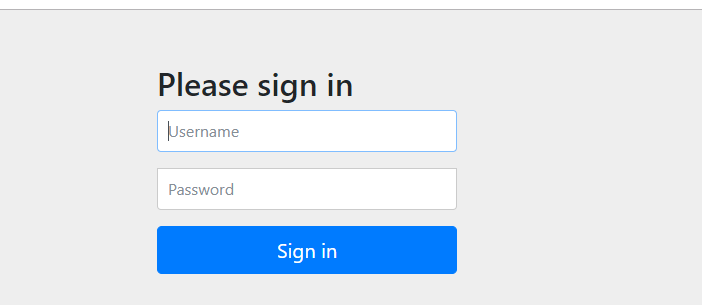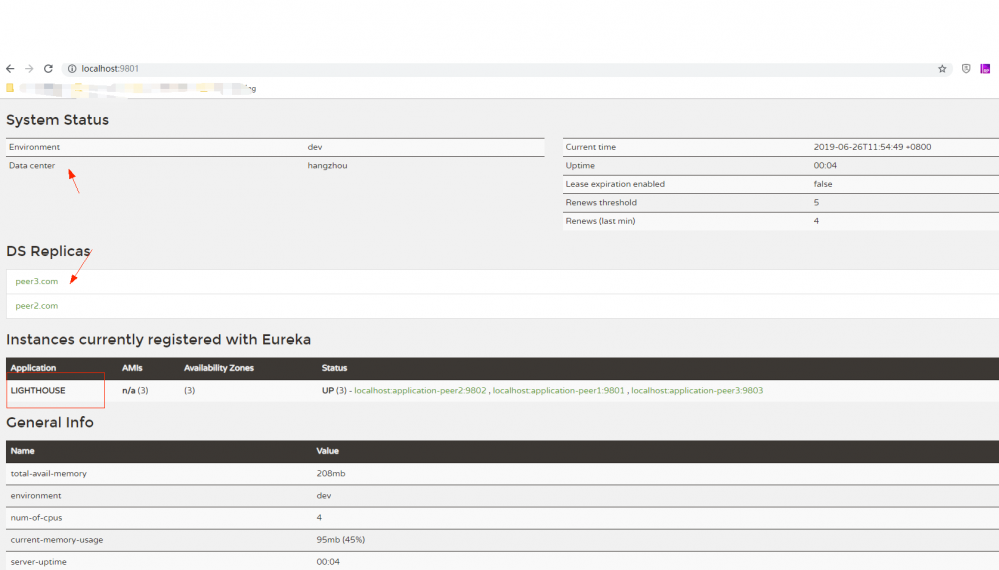Spring Cloud Security&Eureka安全认证(Greenwich版本)
一·安全
Spring Cloud支持多种安全认证方式,比如OAuth等。而默认是可以直接添加 spring-boot-starter-security 来配置HTTP BASIC认证。如果没有配置用户和密码,那么默认的用户是user,并随机生成一个密码,在启动的控制台中显示出来。但是这种方式在实践中几乎无实际用途,所以最好还是需要显式设置(参数名为 spring.security.user.password )
二· 密码加密
直接配置明文敏感信息是比较冒险的,所以一种可行的办法就是将明文加密成密文。密文是以 {cipher} 开头,系统会自动在使用之前将其解密。如果配置的属性( keyname )对应密文无法解密,那么系统将会将此属性移除,并增加一个属性 invalid${keyname}: not applicable 。
数据的加密解密可以通过接口 /encrypt 和 /decrypt 完成,比如:
$ curl localhost:8888/encrypt -d mysecret 682bc583f4641835fa2db009355293665d2647dade3375c0ee201de2a49f7bda $ curl localhost:8888/decrypt -d 682bc583f4641835fa2db009355293665d2647dade3375c0ee201de2a49f7bda mysecret
如果安装了扩展Spring Cloud CLI extensions,那么可以直接Spring命令工具:
$ spring encrypt mysecret --key foo 682bc583f4641835fa2db009355293665d2647dade3375c0ee201de2a49f7bda $ spring decrypt --key foo 682bc583f4641835fa2db009355293665d2647dade3375c0ee201de2a49f7bda mysecret
也可以使用密钥文件加解密,文件路径参数前需要个特殊符号@,如下:
$ spring encrypt mysecret --key @${HOME}/.ssh/id_rsa.pub
AQAjPgt3eFZQXwt8tsHAVv/QHiY5sI2dRcR+...
注意:要使用加密解密的功能,必须要下载JCE(Java Cryptography Extension (JCE) Unlimited Strength Jurisdiction Policy Files)。这些默认是不包含在JDK中的。
三.Eureka Server配置HTTP BASIC
在配置文件中增加 spring-boot-starter-security ,如下:
<dependency>
<groupId>org.springframework.boot</groupId>
<artifactId>spring-boot-starter-security</artifactId>
</dependency>
注意,在最新版本 Greenwich 中,口令不是配置 security.user.name 和 security.user.password 属性中,它已被废弃不推荐使用,而是配置在Spring中( spring.security.user.name 和 spring.security.user.password )。以下的是Eureka多集群的( Greenwich )的配置文件:
USER: light
PASSWORD: 123456
spring:
security:
user:
name: ${USER}
password: ${PASSWORD}
eureka:
client:
service-url:
defaultZone: http://${USER}:${PASSWORD}@peer1.com:9801/eureka/,http://${USER}:${PASSWORD}@peer2.com:9802/eureka/,http://${USER}:${PASSWORD}@peer3.com:9803/eureka/
---
spring:
profiles: peer1
application:
name: application-peer1
server:
port: 9801
eureka:
environment: dev
datacenter: hangzhou
instance:
hostname: peer1.com
appname: lighthouse
---
spring:
profiles: peer2
application:
name: application-peer2
server:
port: 9802
eureka:
environment: dev
datacenter: beijing
instance:
hostname: peer2.com
appname: lighthouse
---
spring:
profiles: peer3
application:
name: application-peer3
server:
port: 9803
eureka:
environment: dev
datacenter: guangzhou
instance:
hostname: peer3.com
appname: lighthouse
由于默认是开启CSRF,所以需要将其关闭,不然会出现如下错误:
javax.ws.rs.WebApplicationException: com.fasterxml.jackson.databind.exc.MismatchedInputException: Root name 'timestamp' does not match expected ('instance') for type [simple type, class com.netflix.appinfo.InstanceInfo]
创建一个 WebSecurityConfig 类,代码如下:
// WebSecurityConfig.java
@EnableWebSecurity
@Configuration
public class WebSecurityConfig extends WebSecurityConfigurerAdapter {
@Override
protected void configure(HttpSecurity http) throws Exception {
http.csrf().disable(); //关闭csrf
super.configure(http); //开启认证
}
}
启动三个配置文件对应的三个实例,就可以看到已经启用HTTP BASIC认证:


关于Eureka Server集群的配置,请参考另外一篇文章
– Spring Cloud Eureka集群配置及注意事项(Greenwich版本)
Eureka Client和Service Provider配置方法类似,只需要在defaultZone中配置好含有认证信息的url即可,如下所示。
“`
USER: light
PASSWORD: 123456
eureka:
client:
service-url:
defaultZone: http://${USER}:${PASSWORD}@peer1.com:9801/eureka/,http://${USER}:${PASSWORD}@peer2.com:9802/eureka/,http://${USER}:${PASSWORD}@peer3.com:9803/eureka/
“`
四·参考
- Spring Cloud Config
- Eureka注册中心设置安全保护
- Eureka Server 加上安全认证之后,服务无法注册
- Eureka安全认证
- 本文标签: 安装 XML ACE ssh Spring Cloud Config tar IDE provider Service tab 安全 实例 Word java Netflix https 数据 参数 Security 认证 2019 密钥 HTML http spring Spring cloud ip UI Eureka 下载 root 加密 集群 App src id 配置 key 文章 web 注册中心 cat 代码 client IO db
- 版权声明: 本文为互联网转载文章,出处已在文章中说明(部分除外)。如果侵权,请联系本站长删除,谢谢。
- 本文海报: 生成海报一 生成海报二










![[HBLOG]公众号](https://www.liuhaihua.cn/img/qrcode_gzh.jpg)

